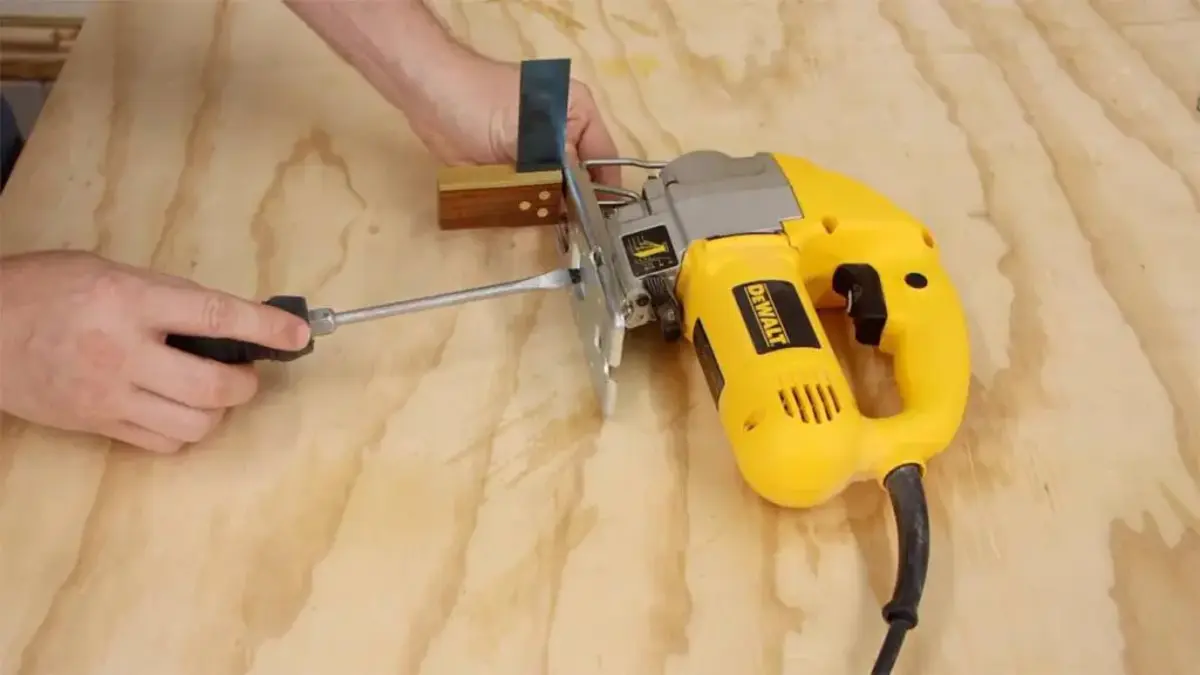A DeWalt jigsaw is a precision tool, revered for its ability to make accurate and clean cuts. However, encountering a situation where the jigsaw veers off course and fails to cut straight can be a frustrating obstacle.
In this detailed guide, we will dissect the potential reasons dewalt jigsaw not cutting staight issue and provide you with practical solutions to ensure your DeWalt jigsaw performs with the precision.
First Things To Note:
The array of jigsaw blades available is surprisingly diverse, each designed for specific materials such as plastic, metal, laminate, light wood, and dense wood. Blades also vary in cutting actions, including upstroke, downstroke, and both.
While novice jigsaw users might assume that any blade will suffice, this approach often leads to frustration. It’s crucial to select the appropriate blade for the task at hand and understand how it will impact the jigsaw’s behavior to ensure a smoother operation. It is essential to determine the appropriate jigsaw blade for normal woodwork, plywood, and metal
Nevertheless, complications may arise in certain scenarios due to improper jigsaw usage. If you are a beginner experiencing difficulties, it is advisable to consult the manual for optimal jigsaw performance. Below, we offer solutions for addressing the issue of a Milwaukee jigsaw blade not cutting straight.
Dewalt Jigsaw Not Cutting Straight:
When your DeWalt jigsaw seems to have lost its knack for straight cuts, several factors might be at play. Let’s delve into each potential cause and unveil the tailored solutions to get your jigsaw back on track:
1. Blade Life:
Jigsaw blades inevitably lose their sharpness over time, especially when dealing with inexpensive options. If you’re uncertain about the age or prolonged usage of your blade, consider replacing it with a new one. The difference in cutting performance might pleasantly surprise you.
2. Excessive Force:
This timeless lesson applies to various situations, including using a jigsaw. Saw blades, including jigsaw blades, are designed to carry out the cutting work effortlessly. Applying excessive pressure can overwhelm the blade’s capacity to cut and remove wood effectively. Allow the blade to perform its task while maintaining a steady and straight grip.
3. Subpar Jigsaw:
I’m not one to typically attribute poor results to tools, as a skilled woodworker can often make any tool work sufficiently. However, the jigsaw stands out as an exception.
Designed with a top-heavy structure and a small base, the jigsaw lacks the stability needed for precise cuts, particularly with an unsupported blade at the bottom. When coupled with an old or inexpensive saw prone to vibrations and chatter, the tool becomes challenging to use and can significantly contribute to cutting inaccuracies.
While it may not be the sole reason your jigsaw isn’t cutting straight, it could play a substantial role in the issue.
4. Tilted Base:
Although this video and article emphasize avoiding bevel cuts, most jigsaws come equipped with a tilting base for intentional bevel cutting. It’s essential to ensure that the base is square to the blade.
A practical method is to slightly loosen the base, allowing controlled movement without excessive play, and then use a small square on the blade to verify the alignment. Even if you’ve never intentionally tilted the base, periodically check for squareness, as it can impact cutting accuracy.
5. Maintaining Saw Alignment:
While it might sound excessively straightforward, often we can be our own greatest obstacles. Regardless of how well you address the factors mentioned above, if you struggle to keep the jigsaw steady and straight, achieving precise cuts becomes a challenge.
During the learning phase and as you gain proficiency, employing a straight edge to guide the saw can be invaluable. This technique not only assists beginners in familiarizing themselves with the tool but remains a useful approach even for seasoned experts, ensuring consistent and accurate results.
6. Professional Assistance:
If issues persist, seeking professional assistance from a tool repair center or contacting DeWalt’s customer support is a viable option.
Professional guidance can provide in-depth troubleshooting and tailored solutions to ensure a comprehensive resolution to the cutting accuracy issue.
Conclusion:
By addressing these potential issues and implementing the corresponding solutions, you can elevate the cutting accuracy of your DeWalt jigsaw and achieve the straight, precise cuts it’s designed for. Whether you’re a woodworking enthusiast or a professional, mastering precision is key to unlocking the full potential of your DeWalt jigsaw.

